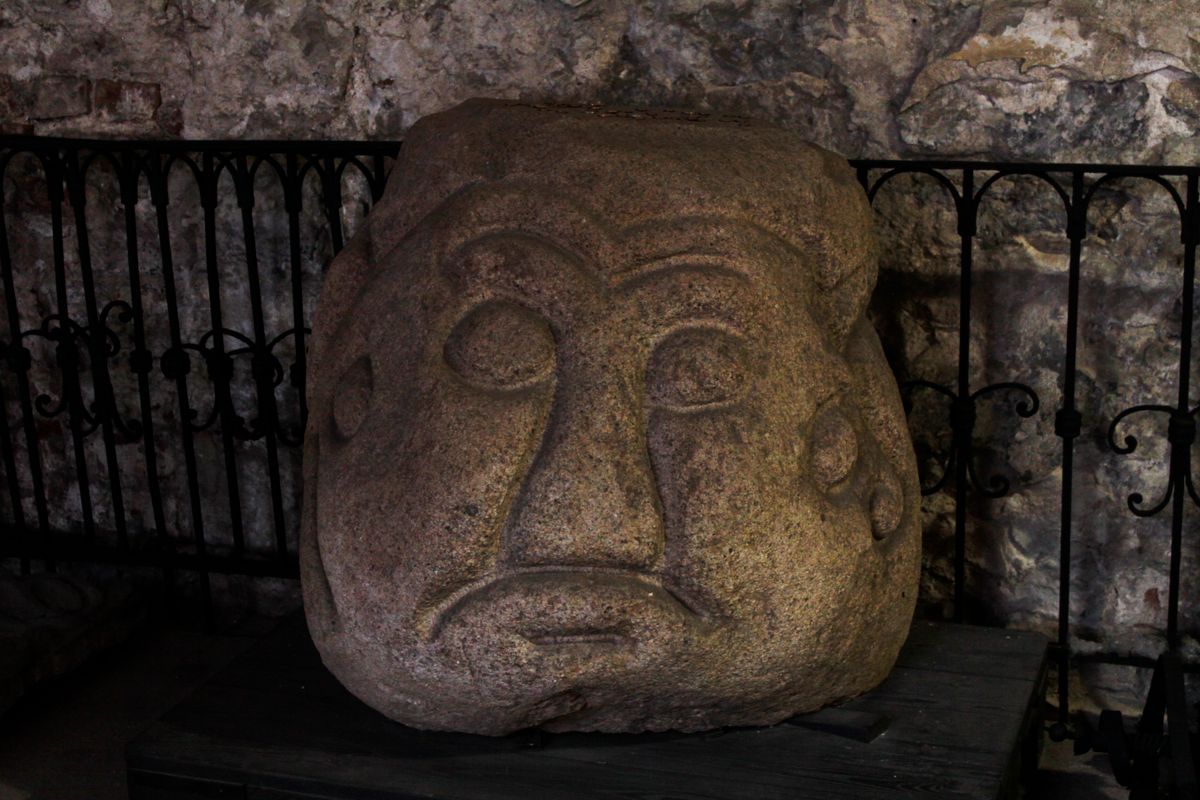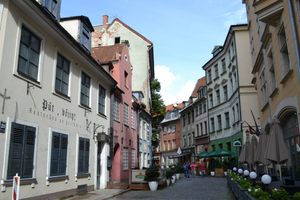About
Not much is known about the history of this strange stone. A farmer found it while plowing a field one day in 1851. He brought the stone, along with some others, to a stone mason. After realizing the rock was carved to resemble a human head, the stonemason sent it to the museum at the Riga Cathedral.
Though museum records prove the stone was once in its possession, the enigmatic artifact later went missing for a period. It was eventually unearthed during churchyard excavations in 2000. Today, it’s displayed alongside other archaeological artifacts in church’s outside yard.
The stone’s origins are as unclear as its unusual past. It’s believed an iron tool was used to carve human facial features into the 36-inch-tall (93 centimeters) boulder. It’s also believed the rock is a religious idol, similar to other stone figures associated with past Baltic cultures, such as the Old Prussian Hags of Northern Pomerania. Given its likely pagan association, some claim the rock was intentionally buried within the churchyard because of the church’s intolerance for such idols.
Related Tags
Know Before You Go
The head is on a display in the inside yard of Dome Church, along with some archeological and historic objects. There is a small fee to enter the dome and inside yard.
Community Contributors
Added By
Published
January 8, 2019


































